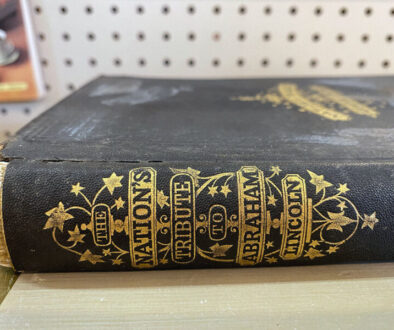Sam the MothMan of Cape May
In summer and fall it’s not uncommon to come to work and find a large mesh cage set up in the middle of the building, with one or more specimens of some special creature crawling around inside. Most of the time these are moths, and sometimes they’re something entirely different, but nearly all the time they came from Sam Galick, our project manager as well as an enthusiastic naturalist. Sam is an amazing birder, which is how we met many years ago when he came to count migrating birds for the Cape May Bird Observatory. But Sam is so much more than that, and his passion for moths is not only infectious, but continues to expose and educate all of us working together at Cellular Tracking Technologies. Sam lives in Cape May Court House with his wife, Emily, and daughter Josephine. I sat down with Sam to ask him a few questions about his passion for moths. Here is our exchange.


D: For the readers who are less familiar with the term, can you explain “mothing”?
S: Mothing can mean a lot of things. For me, mothing is turning on different kinds of light at night against a white sheet or a fence and observe, photograph, and study the moths that land on them. I’ve had people ask me, where did I go to study entomology or lepidoptery, but it’s just a serious hobby for me without any formal study. For as much as I have missed in the classroom, I’ve surely made up my time out in the field. I’ve estimated that over the years I’m well into over 1000 nights of turning on the light. I do dive into other interesting things that come to the sheet, mainly large beetles like the rare Eastern Hercules Beetle, Dynastes Tityus.
D: Tell me a little bit about how you got into mothing, and specifically what you find fascinating about it?
S: It was 2012 when I was first introduced to mothing following the release of a new book by David Beadle and Seabrooke Leckie: Peterson Field Guide to Moths of Northeastern North America. I’ve always been field guide driven, and always had the need to put things in boxes, so the release of this new field guide gave me a challenge to identify the moths that were coming to the lights on my porch. With the pandemic hitting in 2020, and the birth of my daughter, I’ve doubled down and become quite the homebody, turning the lights on every night at home.
D: Where are your favorite mothing sites in New Jersey?
S: Believe it or not I’ve done about 98% of my mothing in my own backyard. It’s truly astonishing how much one can find in one’s own backyard. I can literally count on my hands and feet how many times I’ve burned the light outside of my yard and Cape May County. I do have plans for a mobile mothing station so that I can moth the natural areas in habitats of the county in the near future but pulling me away from my yard is hard to accomplish!
D: I’m a numbers guy: what are some of the stats for your mothing history? How many species have you identified in New Jersey? At one site?
S: Oh yes, me too! At my new house I’m currently sitting at 1,064 species for the yard. I’ve lived in a few places in Cape May over the years so combined for all of Cape May County my moth life list currently stands at 1,293. The problem is that mothing is so fast paced that I can’t keep up with identifying, editing, and submitting every day. I estimate that I probably have an extra 300-400 species that have yet to be identified.

D: As a birder I cringe when someone asks me what my favorite bird is, so I’ll try and mix this question up a bit and ask you for some of your highlights—and of course, if you have a favorite, I’d love to know!
S: I have a couple of clear winners, and luckily don’t cringe too much at the question. Any sight of a Scarlet-winged Lichen-Moth always puts goosebumps on my neck and arm. I actually dressed up as the species for Halloween one year. I also have a strong love for the genus Nemapogon. Within it are several species of “micro-moths” with various combinations of black and white patches, lines, and dots that are only about a centimeter or two long.
D: I have to imagine that you’ve piqued the interest of one or more readers. If someone wanted to find out more, or wanted to join a mothing party, how would they find that info?
S: Mothing has really kicked off in the last 10 to 15 years. I would highly recommend people get the Peterson Field Guide, along with joining and interacting with the dozens of different mothing Facebook groups. There’s a nonprofit organization called National Moth Week (founded in New Jersey), which generally coincides with the peak diversity of moths in late July where public events are hosted all around the world, inviting the general public to stand beside experts and hobbyists at a moth sheet with a light shining on it. Lastly, iNaturalist is an app anyone can download onto their phone to submit photos of anything nature-related, including moths.
D: Are there any other things you’d like our readers to know about?
S: Mothing can be as easy as having a ‘driveway moment’ in front of your porch lights before you walk into your house at night, or out of it in the morning. Take a minute to just look at the collection of moths that have accumulated while you’ve been away. You don’t need special equipment to start, just a light (a CFL type bulb will do) to attract them. Moths are special creatures; little is known about them yet at the same time we’re in an era where all the existing knowledge is at your fingertips. It’s always exciting to see the season progress and welcome new species back to the yard. They represent the greater biodiversity all around us and get us closer to understanding the great nature we have around us here in Cape May.



